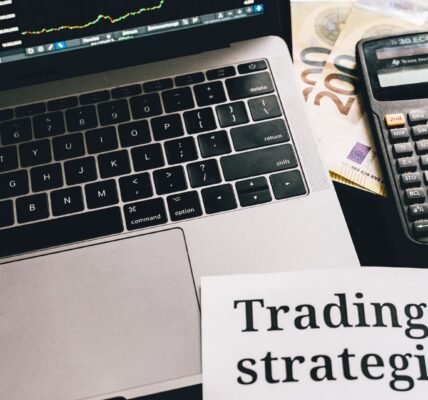Before we explore how to invest in global stock markets, let’s understand why it’s beneficial. Investing globally can diversify your portfolio. It reduces risk by spreading your investments across different markets.
When you invest only in your local market, you’re exposed to country-specific risks. For example, economic downturns, political instability, or regulatory changes can impact your returns. By investing in multiple markets, you can protect your portfolio from these risks.
Key Takeaway
Investing globally helps you spread risk and tap into new growth opportunities.
Key Strategies to Invest in Global Stock Markets
There are several ways to invest in global stock markets. Let’s look at some of the most popular strategies for beginners.
1. Exchange-Traded Funds (ETFs)
ETFs are a great option for beginners. They allow you to invest in a broad range of stocks across different countries. For instance, you can buy an ETF that tracks the MSCI World Index, giving you exposure to developed markets.
Benefits of ETFs:
- Diversification
- Low cost
- Easy to buy and sell
2. American Depository Receipts (ADRs)
ADRs represent shares of foreign companies listed on U.S. exchanges. They make it easier for American investors to buy stocks of global companies. For example, you can invest in companies like Alibaba or Samsung without dealing with foreign stock exchanges.
Benefits of ADRs:
- Convenience
- No need for foreign accounts
- Access to global giants
3. Directly Investing in Foreign Stocks
If you’re feeling confident, you can directly buy stocks on foreign exchanges. This option offers greater flexibility. However, it requires more research and understanding of foreign markets.
Benefits of Direct Investing:
- Full control over stock selection
- Access to emerging markets
- Potentially higher returns
Key Takeaway
Choose the strategy that aligns with your investment goals and risk tolerance.
Steps to Start Investing in Global Stock Markets
Now that you understand the strategies, let’s break down how to invest in global stock markets step by step.
Step 1: Open a Global Trading Account
To invest in foreign markets, you need a brokerage account that supports international trading. Some popular options include Interactive Brokers, Charles Schwab, and Fidelity.
Considerations When Choosing a Broker:
- Access to foreign markets
- Currency conversion fees
- Trading commissions
Step 2: Research Global Markets
Do your homework before diving into global markets. Study the economic conditions, political stability, and growth prospects of different countries. Use tools like Yahoo Finance and Bloomberg to stay updated on global trends.
Key Markets to Watch:
- U.S. Market: The largest and most liquid market
- European Market: Diverse sectors and companies
- Asian Market: High growth potential, especially in China and India
Step 3: Diversify Your Portfolio
Diversification is crucial when you invest in global stock markets. Avoid putting all your money into one market or sector. Instead, spread your investments across different regions and industries.
Examples of Diversified Portfolios:
- 40% U.S. stocks, 30% European stocks, 20% Asian stocks, 10% Emerging markets
- Invest in a mix of sectors like tech, healthcare, and consumer goods
Step 4: Monitor Exchange Rates
Currency fluctuations can impact your returns. For example, if the U.S. dollar strengthens, your investments in foreign currencies may lose value. Use apps like XE Currency Converter to keep track of exchange rates.
Key Tip:
Consider investing in markets with stable currencies to reduce exchange rate risk.
Key Takeaway
Opening a global trading account, doing your research, diversifying your portfolio, and monitoring exchange rates are essential steps to succeed in global investing.
Risks to Consider When Investing Globally
Investing in global stock markets comes with its own set of risks. It’s important to be aware of these risks to make informed decisions.
1. Currency Risk
As mentioned earlier, currency fluctuations can affect your returns. To mitigate this risk, consider hedging your investments.
2. Political and Economic Risk
Each country has its own political and economic landscape. Factors like government policies, economic stability, and trade relations can influence stock prices. For example, political instability in emerging markets may lead to market volatility.
3. Regulatory Risk
Different countries have different regulations for investors. Some countries may impose taxes on foreign investments. Ensure you understand the tax implications before investing.
Key Takeaway
Be aware of currency, political, and regulatory risks when investing in foreign markets. Proper planning can help you minimize these risks.
Best Practices for Global Stock Market Investing
To succeed in the global markets, follow these best practices:
1. Start Small
If you’re new to global investing, start with a small portion of your portfolio. This allows you to gain experience without taking on too much risk.
2. Keep Learning
Global markets are constantly evolving. Stay updated with market news, economic reports, and global trends. Use resources like CNBC, Financial Times, and The Economist.
3. Review Your Portfolio Regularly
Markets change, so should your portfolio. Review your investments periodically to ensure they align with your goals. Rebalance your portfolio if necessary.
4. Use Technology
Leverage stock market apps and tools to track your investments. Apps like TradingView and Morningstar can provide insights into global markets.
Key Takeaway
Starting small, continuous learning, regular portfolio reviews, and using technology can enhance your global investing strategy.
Conclusion: The Future of Global Investing
Investing in global stock markets can open up new opportunities. It allows you to diversify your portfolio, tap into new markets, and maximize returns. However, it’s important to understand the risks and strategies involved.
Whether you choose to invest through ETFs, ADRs, or directly in foreign stocks, the key is to stay informed. Do your research, diversify your investments, and monitor global trends.





